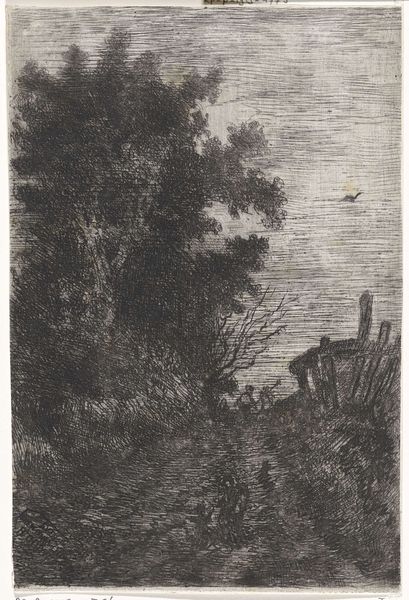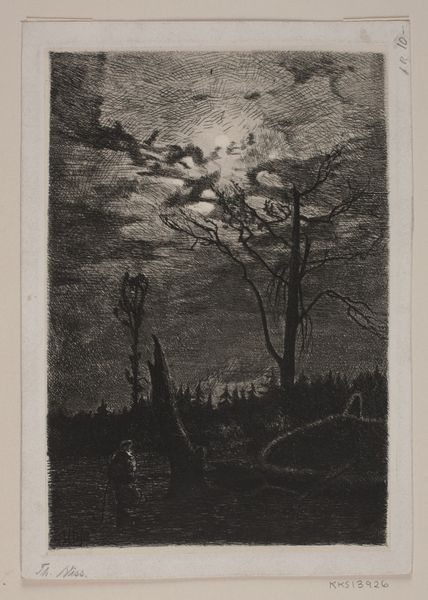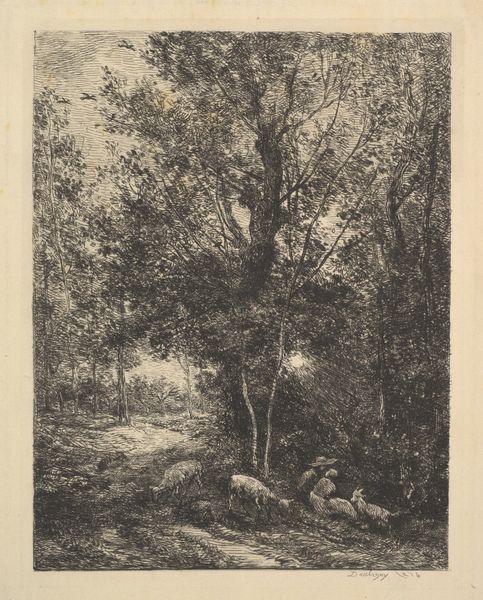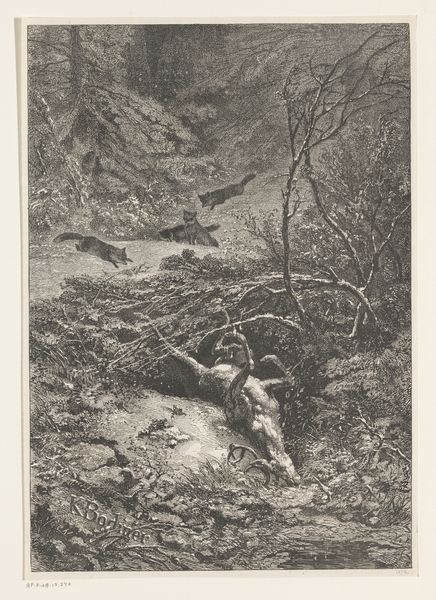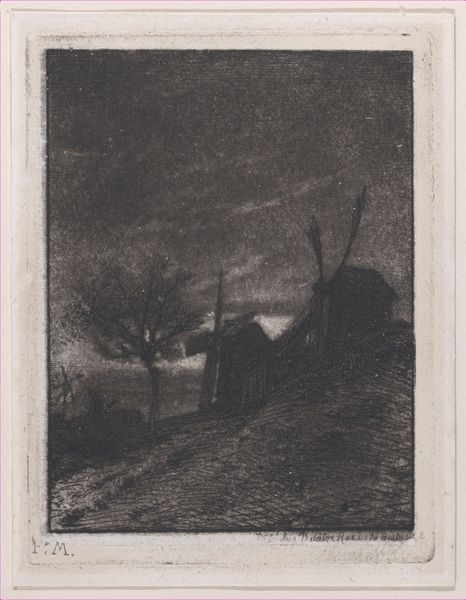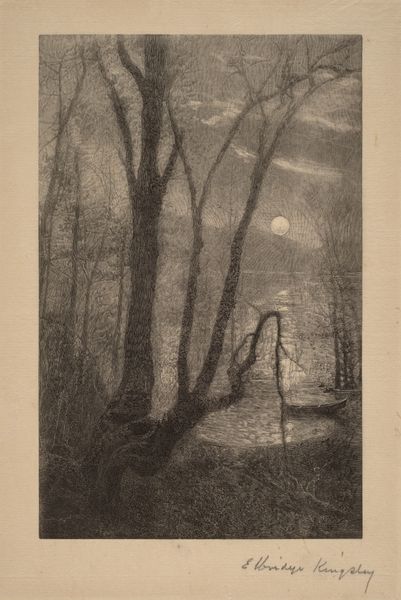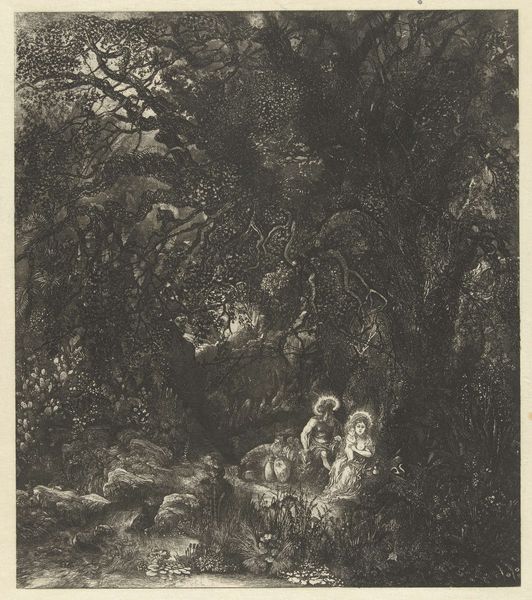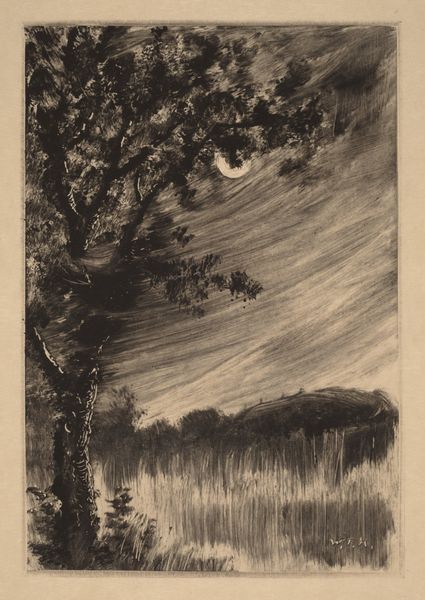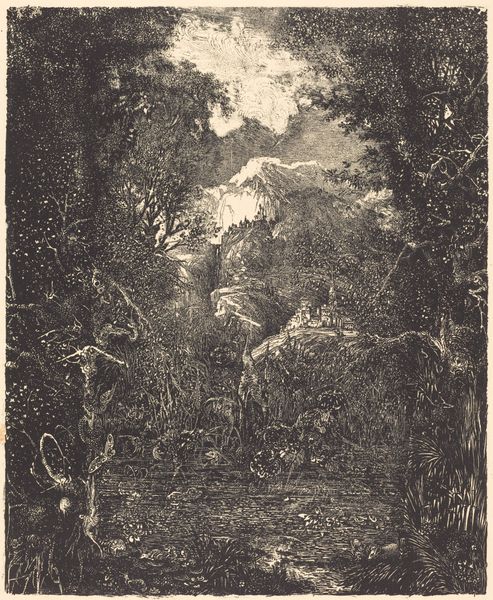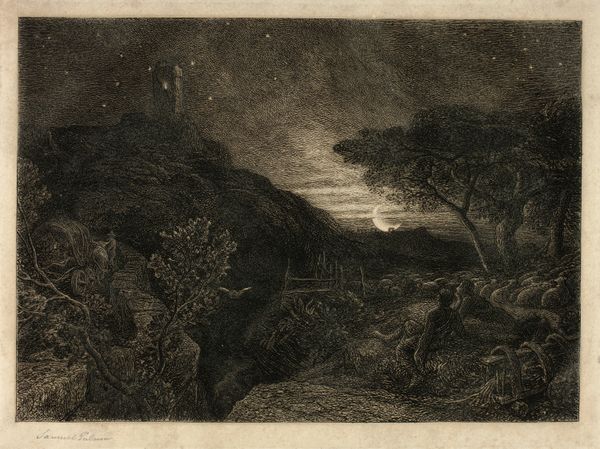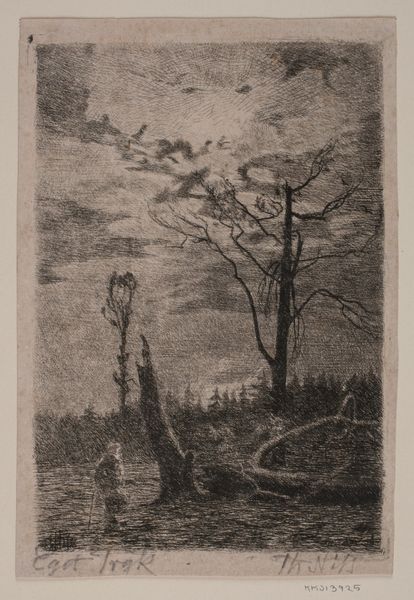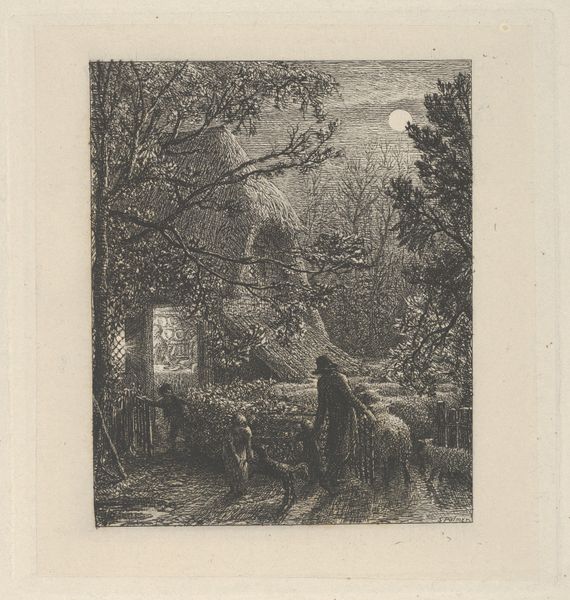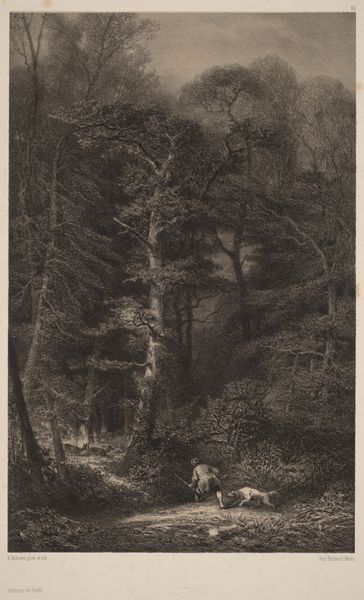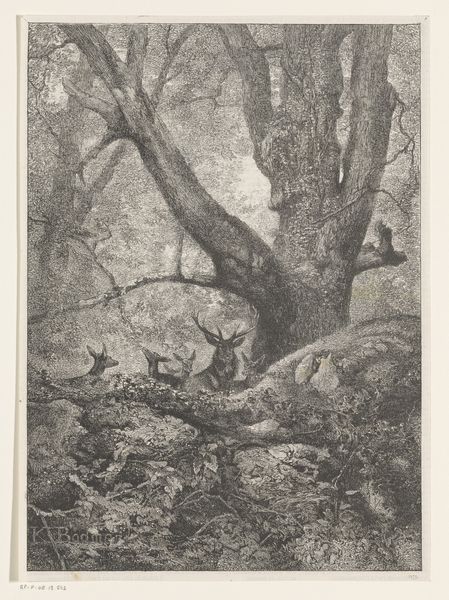
Copyright: Public Domain
Editor: Here we have Hans Thoma's "Cross in the Moonlight," created around 1860 using pencil, charcoal, and chalk. It's quite somber, isn't it? A lone figure walks toward a cross bathed in moonlight. What do you see in this piece that strikes you? Curator: Initially, it's the deliberate orchestration of light and shadow. Notice how the stark contrast isn't merely representational but functions structurally. The luminosity surrounding the cross creates a focal point, a visual anchor, while the darkened foliage serves to compress the space, heightening the sense of drama. The artist makes conscious use of the intrinsic properties of each drawing material. How does the contrast affect your reading of it? Editor: I suppose it amplifies the feeling of isolation and perhaps reverence. The cross, sharply illuminated, stands in opposition to the shadowed figure. It feels very staged somehow. Curator: Precisely. The artist constructs the scene, manipulating the formal elements. Consider the deliberate placement of the cross—slightly off-center. Its verticality is echoed, almost mocked, by the slender trees, causing tension. Would it carry such resonance if it were perfectly centered? Editor: Probably not, it would be less dynamic, more static perhaps? Seeing how the elements relate in this composition makes me wonder why he used this medium as opposed to paint, for instance? Curator: The use of graphite, chalk, and charcoal allows for the exploitation of tonal gradations to maximum effect. It is this tonal harmony, punctuated by strategic light, that provides a structure to the drawing, one of the key expressive features. Editor: So, the drama emerges not just from the subject but from the formal techniques, almost like a stage play. It makes the romantic theme so much more compelling, seeing the technical architecture as a crucial part of the visual narrative. Curator: Exactly. Now you’re beginning to decode its visual language.
Comments
No comments
Be the first to comment and join the conversation on the ultimate creative platform.
